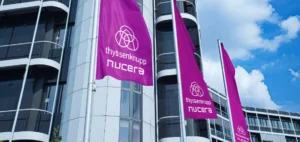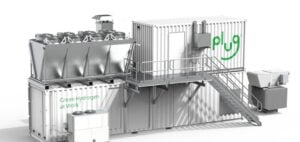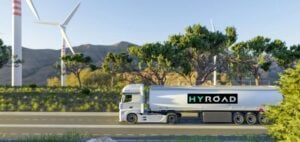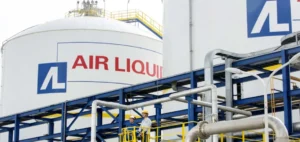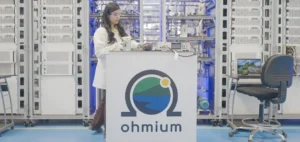The industrial site of Duolun, operated by China Datang Corporation Ltd., combines 150 MW of wind and solar power with an alkaline electrolysis facility to produce approximately 6,300 tonnes of green hydrogen per year. This production is injected into an existing coal-based methanol unit, reducing reliance on grey hydrogen and providing an industrial outlet for surplus renewables from Inner Mongolia. This demonstrator is the first in China to integrate green hydrogen into a coal-to-chemicals complex at industrial scale.
Curtailment reduction and industrial integration
The project operates with thirteen electrolysers powered by renewable electricity, delivering an announced annual reduction of around 129,300 tonnes of carbon dioxide. This configuration fits into a marginal greening strategy, aiming to lower carbon intensity without challenging the coal-based core of the process. It also addresses an economic need: monetising renewable production poorly remunerated on China’s national grid.
Strategic positioning of Inner Mongolia
This demonstrator aligns with regional roadmaps aiming to establish Inner Mongolia as a hub for green hydrogen production, with a declared target of 480,000 tonnes per year by 2025. The Duolun project is listed among the first pilot initiatives recognised by the central administration, ensuring priority access to CAPEX and OPEX subsidies and enhancing its visibility with institutional and private stakeholders.
Economic effects on the value chain
At the scale of China’s hydrogen market—dominated by fossil-based production exceeding 30 mn tonnes/year—Duolun’s contribution remains marginal. However, the project allows testing the profitability of integrating green technologies into capital-intensive industrial sites, which may guide future investments. The estimated cost of green hydrogen production in China ranges from $2.3 to $7.4/kg, well above that of grey hydrogen.
Accelerator for technology suppliers
Duolun strengthens the position of Chinese electrolyser manufacturers and industrial system integrators. The technologies deployed (multi-electrolyser management, coupling with methanol processing) could be exported as turnkey solutions to other regions seeking to decarbonise industrial hydrogen use, notably in Central Asia and the Middle East.
Financial positioning and internal governance
China Datang Corporation Ltd. uses the project to improve its status as a transition issuer with institutional investors. The asset aligns with several ESG (environmental, social, governance) criteria and increases the share of low-carbon projects in the group’s portfolio. It also helps stabilise renewable energy revenues by bypassing curtailment-related losses.
Exposure to future regulatory frameworks
However, Duolun remains tied to a highly capitalised coal-to-chemicals infrastructure. Should China tighten its emissions regulations after 2030—through absolute caps or higher carbon pricing—the site’s long-term economic viability could be undermined, even with green hydrogen integration. Recognition of green hydrogen volumes in carbon accounting will be key to maintaining eligibility for transition finance.
Towards national replication of the model
The Duolun model could be replicated in other coal-to-chemicals hubs such as Ningxia, Shaanxi or Xinjiang. Such deployment would drive a shift in capital allocation towards hybrid infrastructure combining coal, green hydrogen and methanol. This strategy may allow China to export lower-carbon chemical products while anticipating future import restrictions tied to carbon content.












